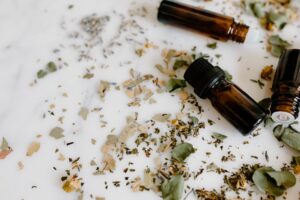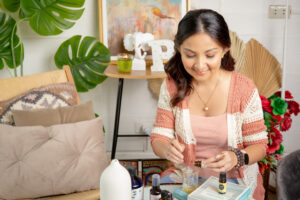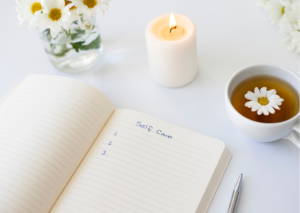Essential oils… you see them everywhere nowadays – from a friend who keeps on posting how beneficial these oils are for their children.
Hospitals diffuse essential oils in the emergency room. There is always that wonderful aroma when you pass by some stalls in the malls – it’s no wonder sales for essential oils have skyrocketed in the past years.

According to Reuters, the essential oil global business is anticipated to reach $14.6Bn by 2026 from $7.03B last year.
In the Philippines alone, the market is growing so fast that big direct-selling brands have already launched their local offices. This clearly shows the receptiveness of our market to try complementary modalities.
As a certified aromatherapist, this is good news.
More and more people are acknowledging the potency of essential oils. Year after year, new research has come out to validate the therapeutic action of essential oils.
Lavender has great potential in addressing anxiety and tea tree oil has anti-inflammatory and antimicrobial properties, especially in topical application.
With this scientific research, the use of essential oils has transcended from quackery to a viable option for holistic wellness.
I can relate to many mothers out there who have become oilbularyos. We have been barraged with so many diseases and trying out more natural approaches to dealing with these minor ailments is very appealing.
Yes, essential oils are amazing products of nature that can support many of our minor issues.
However, we need to understand that like everything else under the sun, it needs to be used with the proper knowledge as an inaccurate use of these products may harm someone else, most especially young kids. Not because it is all-natural, it is safe to use on all occasions and in any way we like.
Here are some guidelines you may want to look into when using essential oils:
-
EOs are complementary therapies. It should not be used to cure serious conditions. The FDA does not regulate essential oils as they do for pharmaceuticals and most essential oils have not been clinically studied to produce defined therapeutic actions. If your child has a fever or cough that goes on for days, please bring them to the doctor so that they can be properly diagnosed. If you are severely burned, please do not self-medicate by just applying lavender essential oil and refusing to go to the doctor. Essential oils help the body nudge towards homeostasis (or the perfect balance of your body) and may not help with adverse medical emergencies.
-
Know the proper dilution of EOs, especially with young children. Essential oils are potent substances that can cause allergic and contact dermatitis when not used properly. Essential oils should always be used with fatty oils such as almond oil, coconut oil, or grapeseed oil with the proper dilution. Start with the lowest possible dilution and see how it works from there. A good guideline for children above two years old with no skin sensitivity or immune problems is 1% or two drops of essential oils (whether this is a single oil or a total of an essential oil blend) per 10mL of carrier oil. For healthy adults (not pregnant, breastfeeding, or elderly), roller topical blends can start at 3% dilution or six drops in every 10mL.
-
Use the oils sparingly and only when needed, especially when used topically. The rule of moderation would also apply to EOs. As I mentioned earlier, not because it is natural, we can already use it at any time. Remember that everything is processed by our internal organs, especially our liver and kidneys. If we use essential oils too much and in high dilutions, especially when unnecessary, we risk overloading our internal organs.
-
Avoid neat application as much as possible. Neat or undiluted application on the skin should be avoided. EOs are highly volatile substances that consist of chemical components such as limonene (as found in citrus oils), citral (lemongrass), cinnamaldehyde (cinnamon), and linalyl acetate (lavender), among others. Some of these chemical constituents are highly irritating to the skin and need to be applied at very low dilutions.
Essential oils are wonderful products of nature.
I genuinely believe that they can help support our bodies in achieving vital health. If you want to know more about the safe use of essential oils regardless of the brands you use, please join me at the Holistic Aromatherapy Facebook Group.






